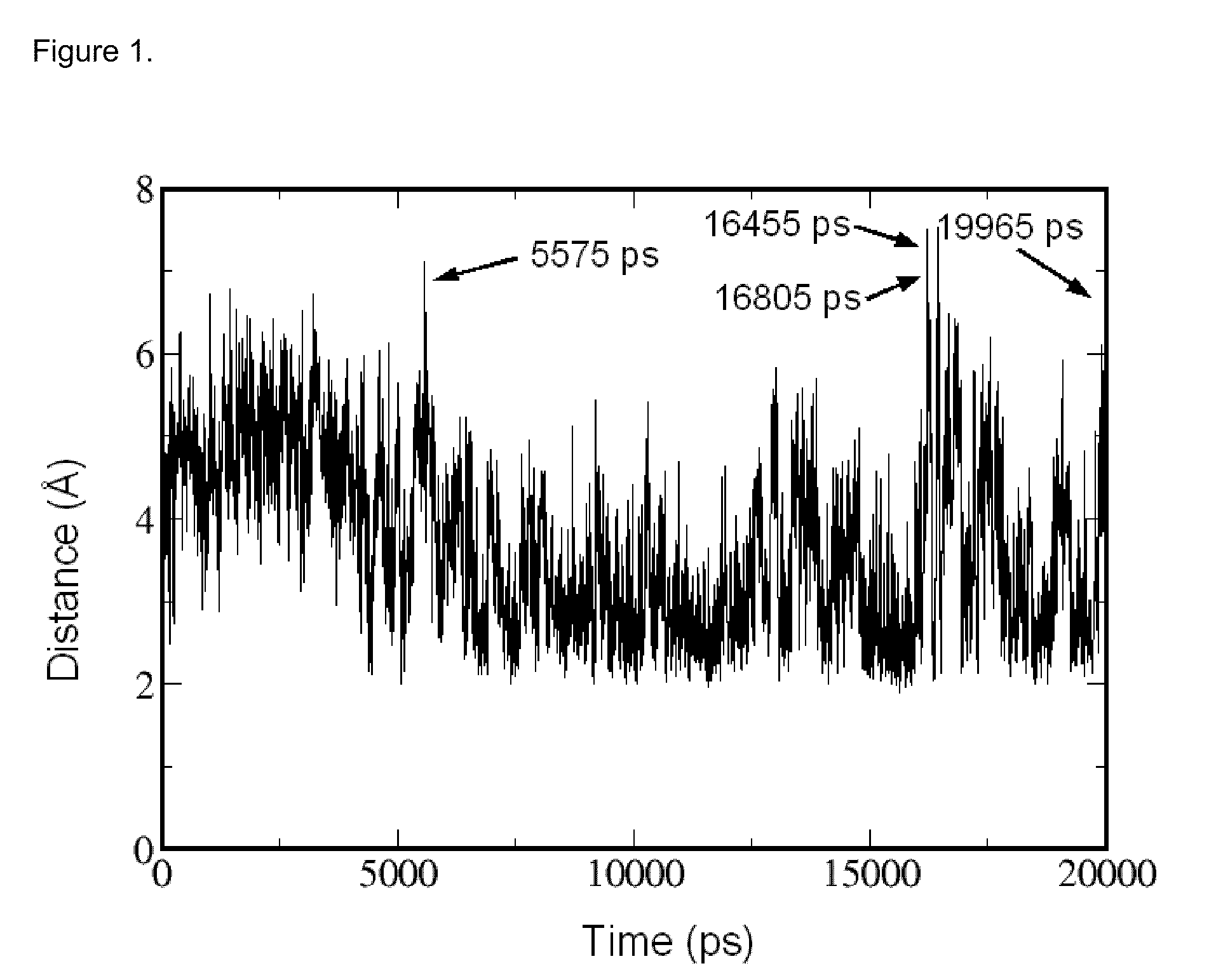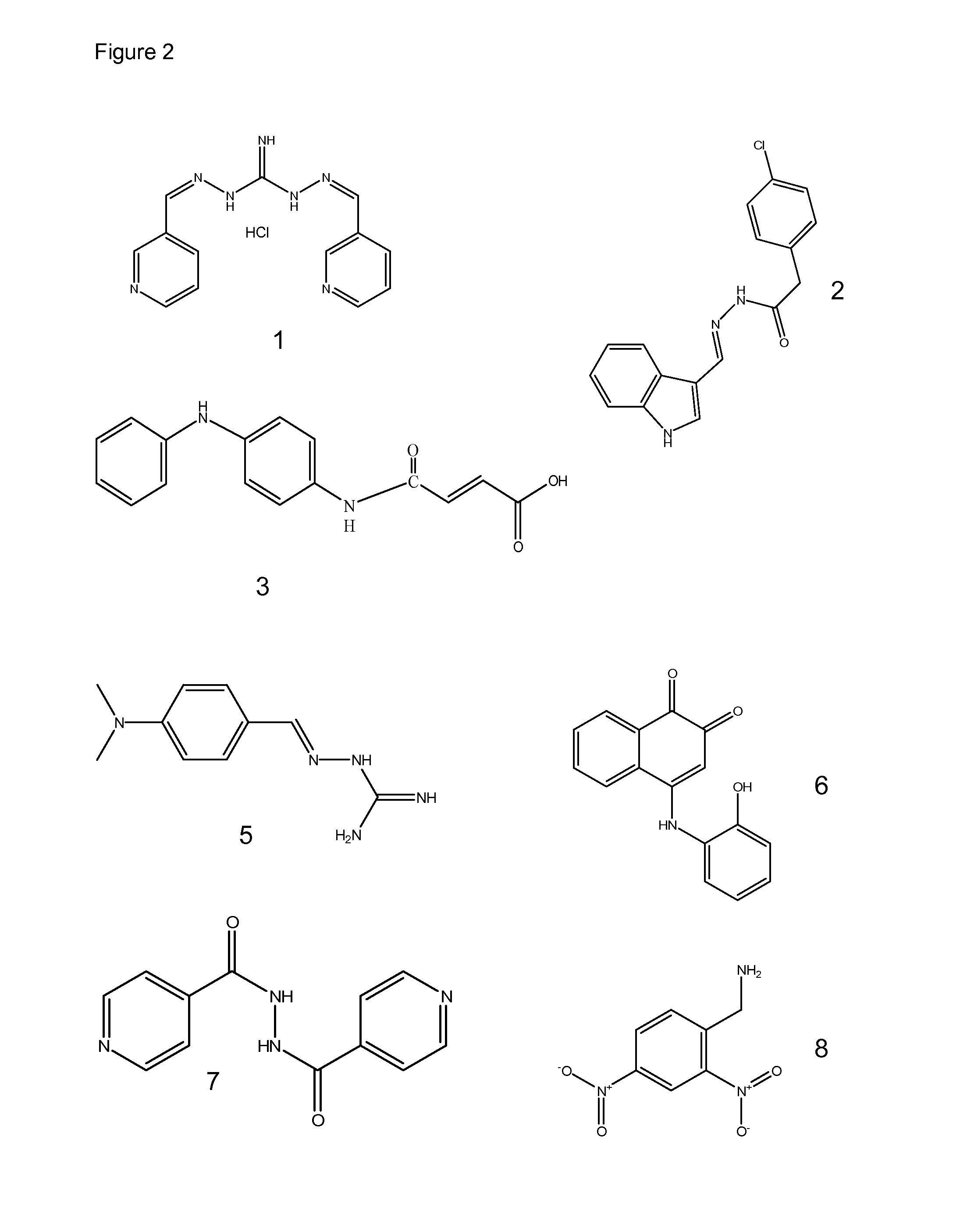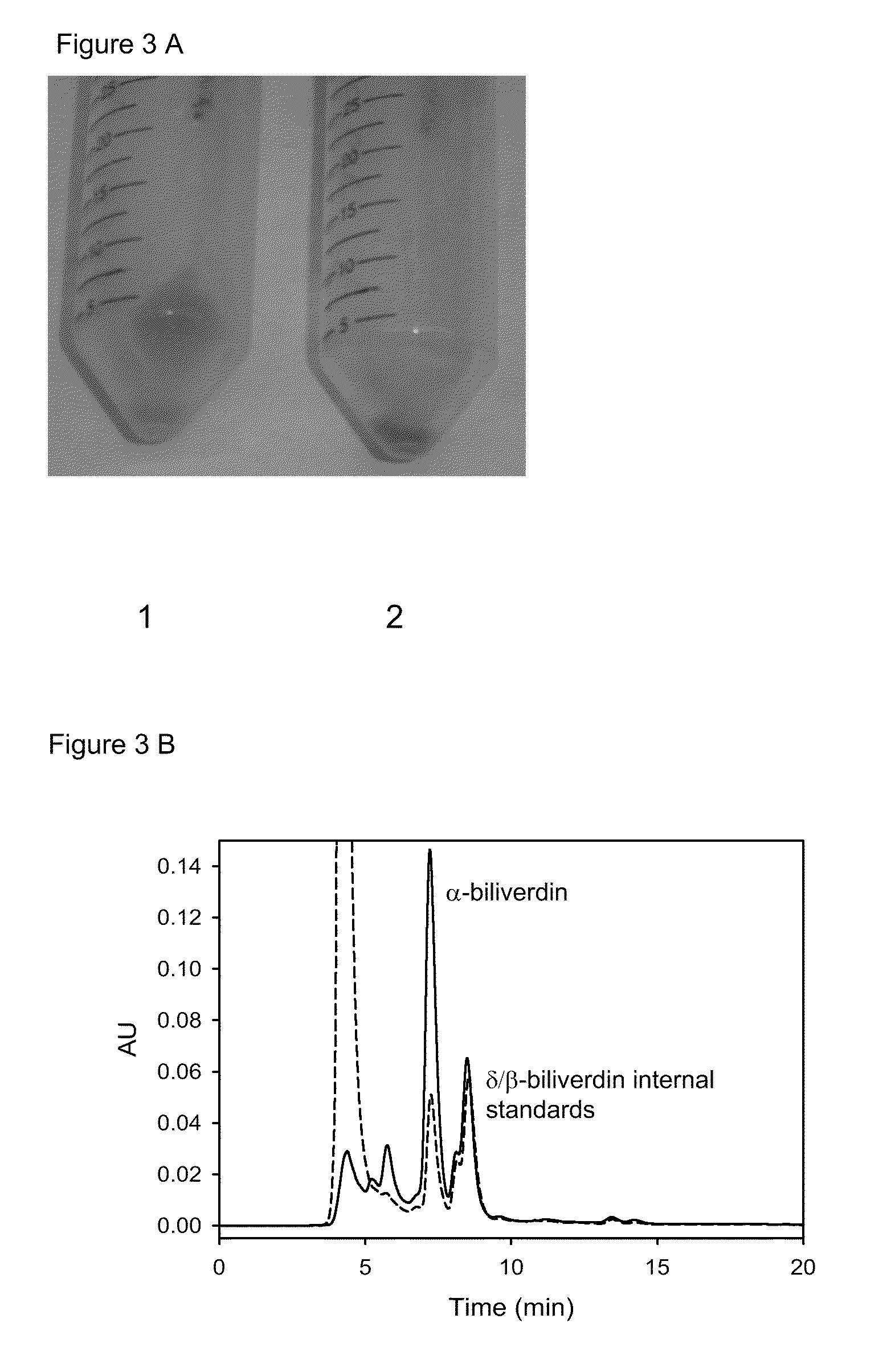Heme oxygenase inhibitors, screening methods for heme oxygenase inhibitors and methods of use of heme oxygenase inhibitors for antimicrobial therapy
a technology of heme oxygenase inhibitors and inhibitors, which is applied in the field of chemistry and medicine, can solve the problems of increasing the risk of infection in hospital or other settings, difficult to eliminate infections from the body, and many antimicrobials are not as effective as they used, so as to reduce the virulence of n, increase the probability of identifying inhibitors specific, and increase the availability of iron for microbial assimilation within the human hos
- Summary
- Abstract
- Description
- Claims
- Application Information
AI Technical Summary
Benefits of technology
Problems solved by technology
Method used
Image
Examples
examples
[0139]Identification of putative inhibitors was performed by screening of a virtual database of over 800,000 compounds36 against the heme binding site of nm-HO. The virtual database represents a collection of low molecular weight compounds that are commercially available and predominately have drug like characteristics61. This database has been used in the laboratory of Dr. Alexander D. MacKerrel for the identification of inhibitors of several proteins35, 40, 41, 62. To obtain multiple conformations of the heme binding site suitable for database screening, the apo form of the protein (i.e., without the heme) was subjected to an MD simulation; from this simulation three conformations which had significant solvent accessibilities of the heme binding site were selected for the database screening. MD simulations and related calculations were performed with the program CHARMM63, 64 using the all-hydrogen protein force field parameters65 including the CMAP enha...
embodiment 1
[0261]A method for treating microbial infection in a subject in need thereof comprising administering to said subject a therapeutically effective amount of an inhibitor of bacterial heme oxygenase.
embodiment 2
[0262]The method for treating microbial infection of Embodiment 1, wherein said microbial infection is at least one infection selected from the group consisting of fungal, viral, protist and bacterial.
PUM
| Property | Measurement | Unit |
|---|---|---|
| MW | aaaaa | aaaaa |
| time | aaaaa | aaaaa |
| overlap threshold | aaaaa | aaaaa |
Abstract
Description
Claims
Application Information
 Login to View More
Login to View More - R&D
- Intellectual Property
- Life Sciences
- Materials
- Tech Scout
- Unparalleled Data Quality
- Higher Quality Content
- 60% Fewer Hallucinations
Browse by: Latest US Patents, China's latest patents, Technical Efficacy Thesaurus, Application Domain, Technology Topic, Popular Technical Reports.
© 2025 PatSnap. All rights reserved.Legal|Privacy policy|Modern Slavery Act Transparency Statement|Sitemap|About US| Contact US: help@patsnap.com



